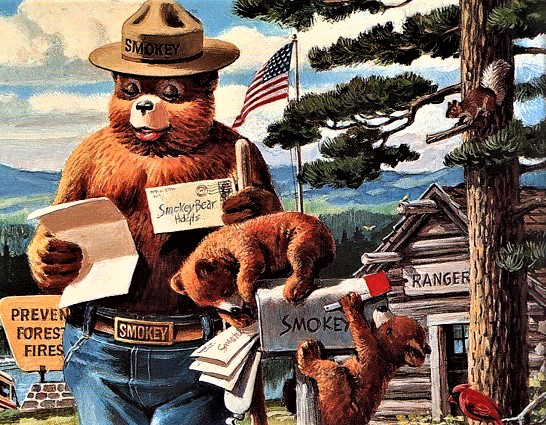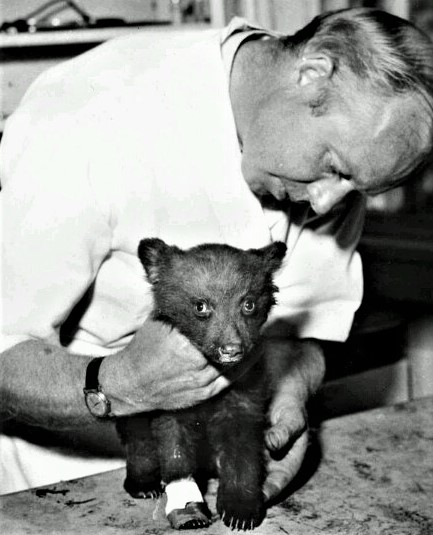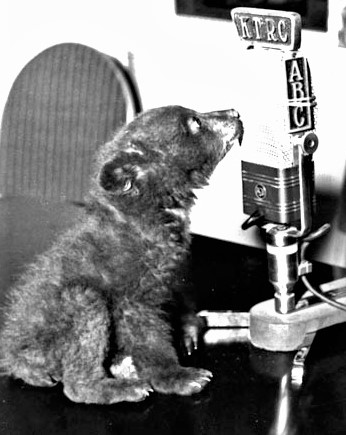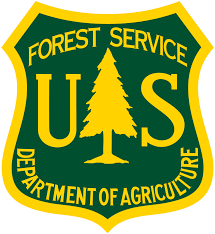 Smokey Bear and his wildfire prevention program are celebrating their 75th birthday.
Smokey Bear and his wildfire prevention program are celebrating their 75th birthday.
You probably saw him on the wildfire prevention posters, or maybe it was his radio and TV public service announcements.  Some of us remember hearing his famous theme song when we were kids. Although he may have resembled a fictional cartoon character, his message and human-like persona were very real.
Some of us remember hearing his famous theme song when we were kids. Although he may have resembled a fictional cartoon character, his message and human-like persona were very real.
It began in 1944, and is now the nation’s longest public service advertising campaign. Smokey became one of the most recognized national symbols, educating the public about dangers of unplanned human-caused wildfires. The U.S. Forest Service created Smokey Bear August 9, 1944 with the first Smokey fire prevention poster (below) by illustrator Albert Staehle.

Smokey’s real-life story started with the Forest Service, which still partners with the Advertising Council and the National Association of State Foresters in sponsoring the Smokey Bear Program.

The wildfire prevention effort really took off after 1950 when the Smokey Bear living symbol — a five-pound, three-month-old male black bear — was found in a scorched tree after surviving a wildfire that burned a portion of the Lincoln National Forest in New Mexico. After rescue by firefighters, that Smokey became a national celebrity. (He lived his 26 years at the National Zoo in Washington D.C., and, after his death from old age, was buried at Smokey Bear Historical Park in 1976 near his original forest home in New Mexico).
The young Smokey truly grabbed the hearts of post-war Americans, generating a national commercial clamor which required action to protect Smokey’s name and image from public domain abuses. Congress passed legislation in 1952 putting the bear’s management under the Department of Agriculture and earmarking Smokey’s royalties for fire prevention education. The Forest Service, part of the Dept. of Agriculture, established a Smokey Bear Program Manager with a support staff to keep up with public demands.

Smokey’s enjoyed nearly 70 years in broadcasting. In early years, radio-TV programmers actually scheduled his PSAs, rather than passing them off as occasional Sunday morning drops-ins. Smokey’s had several voices, but foremost was Jackson Weaver (45 years) on WMAL (Washington D.C. radio) and later actor Sam Elliott, who also shares Smokey’s August 9, 1944 birthday.

Here are examples of Smokey radio PSAs from the 1950s, ’60s and ’70s, followed by three short TV spots from years gone by. The first TV spot is classic animated Smokey Bear, the last two are interesting ’70s ads!
Audio-Smokey Bear on Radio (Run Time 2:20)
Smokey Bear was nearly as big a star as Roy Rogers or Howdy Doody. His thousands of pieces of weekly fan mail prompted the Postal Service in 1964 to give him his own zip code — 20252 — and later the Smokey postage stamp, in 1984. In cities and towns all over America Kids and their parents lined up at schools, fairs and parades for Smokey events and the nearly endless Smokey fire prevention materials — books, posters, color sheets, pencils, bumper stickers and lots more. Those highly prized color posters eventually numbered more than 110, and are coveted collector items. Many of them were created by artist Rudy Wendelin, a 40-year Forest Service employee and Smokey’s primary “caretaker,” from 1944 to 1973.

 After Ron DeHart‘s 13-year run in print and broadcast news, he became one of many current and former U.S. Forest Service employee-advocates for Smokey Bear. Most of his 30-year Public Affairs Officer career was with Western Washington’s Mt. Baker-Snoquamie National Forest, where he retired in 2006. Ron also had early career assignments in Idaho, where he occasionally donned the Smokey Bear outfit.
After Ron DeHart‘s 13-year run in print and broadcast news, he became one of many current and former U.S. Forest Service employee-advocates for Smokey Bear. Most of his 30-year Public Affairs Officer career was with Western Washington’s Mt. Baker-Snoquamie National Forest, where he retired in 2006. Ron also had early career assignments in Idaho, where he occasionally donned the Smokey Bear outfit.
Ron DeHart is a former newspaper and broadcast journalist and a retired Public Affairs Officer from both the U.S. Forest Service and the U.S. Navy/Naval Reserve. His historical accounts of Pacific Northwest broadcasting are published by Puget Sound Media.
View more articles by Ron DeHart


COMMENT GUIDELINES | "What Happened To My Comment?" | post an OFF-TOPIC COMMENT